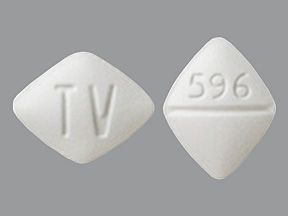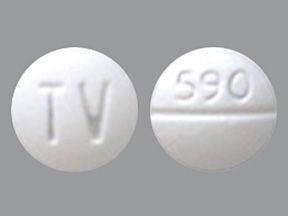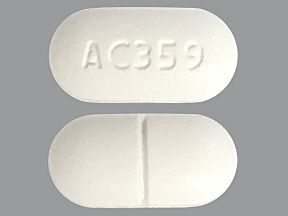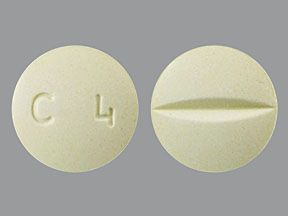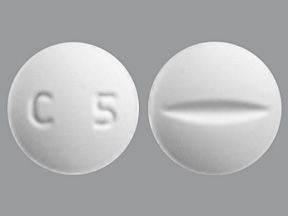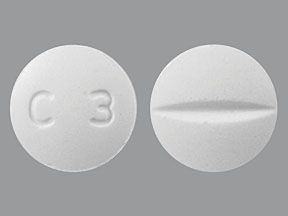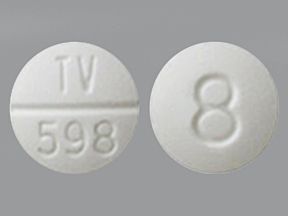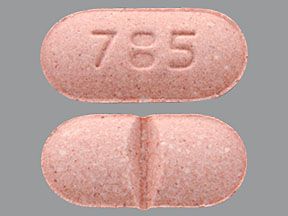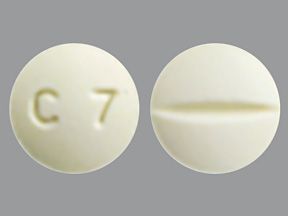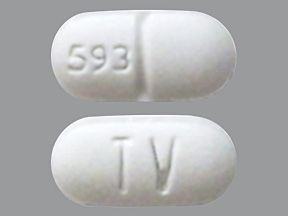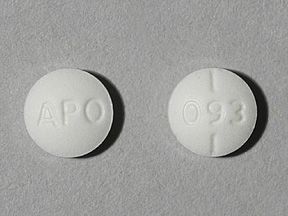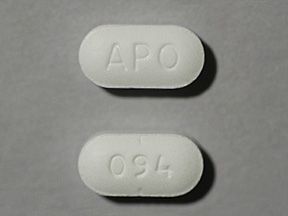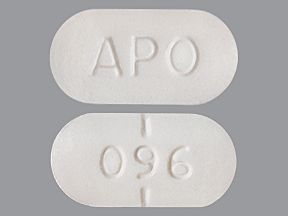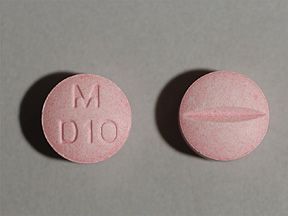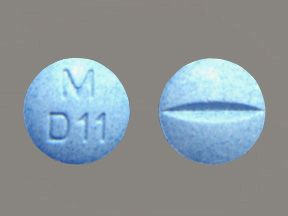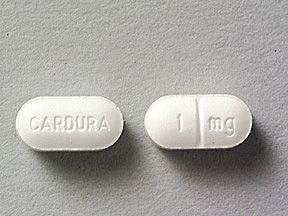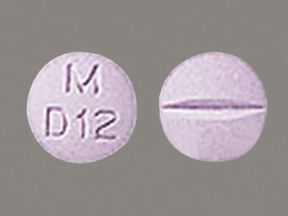Highlights for doxazosin
- Doxazosin oral tablet is available as a generic drug and as brand-name drugs. Brand names: Cardura, Cardura XL.
- Doxazosin comes only as an oral tablet. The tablet is available in two forms: immediate release and extended release.
- Doxazosin oral tablet is used to treat benign prostatic hyperplasia (BPH) and high blood pressure.
- Low blood pressure warning: Doxazosin can cause your blood pressure to become low. This may cause dizziness, lightheadedness, and vertigo when you stand up. This is most common with your first dose of medication, but it can also occur when your doctor changes your dosage. To help prevent this problem, your doctor will start you on the lowest dosage and slowly increase it.
- Cataract surgery warning: Intraoperative floppy iris syndrome (IFIS) can occur during cataract surgery in people who take or have taken doxazosin. Be sure to tell your doctor if you have a cataract surgery planned.
Doxazosin oral tablet is a prescription drug. It comes in immediate-release and extended-release forms.
Doxazosin oral tablets are available as the brand-name drugs Cardura (immediate release) and Cardura XL (extended release). The immediate-release form is also available in a generic version. Generic drugs usually cost less than the brand-name version. In some cases, they may not be available in all strengths or forms as the brand-name drug.
Why it’s used
Both the immediate-release and the extended-release forms of doxazosin are used to treat benign prostatic hyperplasia (BPH). The immediate-release tablets are also used to treat high blood pressure.
Doxazosin may be used as part of a combination therapy. That means you may need to take it with other drugs.
How it works
Doxazosin belongs to a class of drugs called alpha-blockers. A class of drugs is a group of medications that work in a similar way. These drugs are often used to treat similar conditions.
Doxazosin works by blocking certain chemicals, which helps to widen blood vessels and relax muscles in your prostate and in your bladder.
Doxazosin oral tablet can cause drowsiness. Be careful driving and doing other activities that require you to be alert until you know how it affects you.
More common side effects
The more common side effects that occur with doxazosin when treating benign prostatic hyperplasia (BPH) include:
- low blood pressure
- dizziness
- shortness of breath
- tiredness
- abdominal pain
- diarrhea
- headache
- swelling of your feet, hands, arms, and legs
The more common side effects that occur when treating high blood pressure include:
- low blood pressure
- dizziness
- headache
- tiredness
- nausea
- runny nose
- swelling of your feet, hands, arms, and legs
If these effects are mild, they may go away within a few days or a couple of weeks. If they’re more severe or don’t go away, talk to your doctor or pharmacist.
Serious side effects
Call your doctor right away if you have serious side effects. Call 911 if your symptoms feel life-threatening or if you think you’re having a medical emergency. Serious side effects and their symptoms can include the following:
- Heart problems such as chest pain or rapid, pounding, or irregular heartbeat
- Priapism (painful erection that lasts for hours)
- Severe allergic reaction. Symptoms may include:
- wheezing
- chest tightness
- itching
- swelling of your face, lips, tongue, or throat
- hives
- Breathing problems or shortness of breath
Disclaimer: Our goal is to provide you with the most relevant and current information. However, because drugs affect each person differently, we cannot guarantee that this information includes all possible side effects. This information is not a substitute for medical advice. Always discuss possible side effects with a healthcare provider who knows your medical history.
Doxazosin oral tablet can interact with other medications, vitamins, or herbs you may be taking. An interaction is when a substance changes the way a drug works. This can be harmful or prevent the drug from working well.
To help avoid interactions, your doctor should manage all of your medications carefully. Be sure to tell your doctor about all medications, vitamins, or herbs you’re taking. To find out how this drug might interact with something else you’re taking, talk to your doctor or pharmacist.
Examples of drugs that can cause interactions with doxazosin are listed below.
Drugs that inhibit CYP3A4 enzymes
Doxazosin is broken down by the CYP3A4 enzyme, which is a common enzyme that processes drugs. Certain drugs inhibit this enzyme and increase the amount of doxazosin in your blood. It’s important to let your doctor know all the medications you’re taking so they can monitor the effect of doxazosin when taken with these medications.
Examples of these drugs include:
- antifungals such as ketoconazole and voriconazole
- HIV medications called protease inhibitors, such as ritonavir, saquinavir, and indinavir
- macrolide antibiotics such as clarithromycin and erythromycin
Blood pressure medications
Combining doxazosin with any drug that lowers your blood pressure can increase your risk for lowering your blood pressure too much. Examples of drugs that lower your blood pressure are:
- aldosterone antagonists, such as spironolactone and eplerenone
- angiotensin-converting enzyme (ACE) inhibitors, such as benazepril, lisinopril, enalapril, and fosinopril
- angiotensin receptor blockers (ARBs), such as losartan, candesartan, and valsartan
- beta-blockers, such as atenolol, bisoprolol, metoprolol, and propranolol
- calcium channel blockers such as amlodipine, nifedipine, nicardipine, diltiazem, and verapamil
- centrally acting adrenergic agents, such as clonidine, guanfacine, and methyldopa
- direct renin inhibitors, such as aliskiren
- diuretics such as amiloride, chlorthalidone, furosemide, and metolazone
- vasodilators such as hydralazine and minoxidil
- nitrates, such as isosorbide mononitrate, isosorbide dinitrate, and nitroglycerin transdermal patch
Combining doxazosin with drugs that increase your blood pressure can cancel the effects of both medications. Examples of these drugs include:
- symphathomimetics (decongestants) such as pseudoephedrine, oxymetazoline, phenylephrine
- erythropoiesis-stimulating agents (red blood cell production stimulators) such as darbepoetin alfa and epoetin alfa
- contraceptives (birth control) such as ethinyl estradiol and ethinyl estradiol/levonorgestrel
Erectile dysfunction drugs
Combining doxazosin with PDE-5 inhibitors can increase the blood pressure-lowering effects of doxazosin and increase your risk of side effects. Examples of phosphodiaesterase-5 (PDE-5) inhibitors include:
- tadalafil
- sildenafil
- avanafil
- vardenafil
Attention deficit hyperactivity disorder (ADHD) drug
Taking methylphenidate with doxazosin can decrease the effect of doxazosin. This may cause your blood pressure to stay too high.
Parkinson’s disease drug
Taking levodopa with doxazosin can increase your risk of low blood pressure when standing.
Cancer drug
Taking amifostine with doxazosin increases your risk of low blood pressure.
Herbal medications
Taking doxazosin with yohimbine or herbs that can increase your blood pressure can reduce the effect of doxazosin. This may cause your blood pressure to stay too high.
Antidepressants
Taking certain antidepressants with doxazosin can increase your risk of low blood pressure when standing up from sitting or lying down. Examples of these drugs include:
- duloxetine
- monoamine oxidase inhibitors (MAOIs) such as:
- isocarboxazid
- phenelzine
- tranylcypromine
- selegiline
Intermittent claudication drug
Taking pentoxifylline with doxazosin can increase your risk of low blood pressure.
Disclaimer: Our goal is to provide you with the most relevant and current information. However, because drugs interact differently in each person, we cannot guarantee that this information includes all possible interactions. This information is not a substitute for medical advice. Always speak with your healthcare provider about possible interactions with all prescription drugs, vitamins, herbs and supplements, and over-the-counter drugs that you are taking.
Doxazosin oral tablet comes with several warnings.
Allergy warning
Doxazosin can cause a severe allergic reaction. Symptoms can include:
- trouble breathing
- swelling of your throat or tongue
- hives
Don’t take this drug again if you’ve ever had an allergic reaction to it. Taking it again could be fatal (cause death).
Warnings for people with certain health conditions
For people with liver problems: Doxazosin is broken down by your liver. If you have liver problems, you may have an increased risk of side effects.
For people having cataract surgery: Intraoperative floppy iris syndrome (IFIS) can occur during cataract surgery in people who take or have taken doxazosin. Be sure to tell your doctor you take this drug if you have a cataract surgery planned.
Warnings for other groups
For pregnant women: The extended-release form of doxazosin is not meant for use in women. The immediate-release form of the drug can be used in women. However, there haven’t been enough studies done in humans to be certain how doxazosin might affect a fetus during pregnancy.
Tell your doctor if you’re pregnant or plan to become pregnant. Doxazosin should be used during pregnancy only if the potential benefit justifies the potential risk to the fetus.
For women who are breastfeeding: Doxazosin passes through breast milk. You and your doctor may need to decide whether you’ll take this medication or breastfeed.
For seniors: This medication should be used cautiously in people aged 65 years and older. If you’re 65 or older, you’re at increased risk of having low blood pressure when you stand up. This can lead to dizziness and lightheadedness.
For children: The safety and effectiveness of doxazosin haven’t been established in people younger than 18 years old for.
This dosage information is for doxazosin oral tablet. All possible dosages and forms may not be included here. Your dose, form, and how often you take it will depend on:
- your age
- the condition being treated
- how severe your condition is
- other medical conditions you have
- how you react to the first dose
Dosage for benign prostatic hyperplasia
Generic: Doxazosin
- Form: oral immediate-release tablet
- Strengths: 1 mg, 2 mg, 4 mg, and 8 mg
Brand: Cardura
- Form: oral immediate-release tablet
- Strengths: 1 mg, 2 mg, 4 mg, and 8 mg
Brand: Cardura XL
- Form: oral extended-release tablet
- Strengths: 4 mg and 8 mg
Adult dosage (ages 18 to 64 years)
- Extended-release tablet:
- Typical starting dosage: 4 mg per day with breakfast.
- Dosage increases: Your doctor may increase your dosage to a maximum of 8 mg per day in three to four weeks after starting the medication.
- When switching from immediate-release tablets to extended-release tablets: You should start on 4 mg per day. Before you start taking the extended-release tablet, don’t take your last evening dose of the immediate-release tablet.
- Immediate-release tablet:
- Typical starting dosage: 1 mg per day in the morning or evening.
- Dosage increases: Your doctor may increase your dosage by 2 mg every one to two weeks, up to a maximum of 8 mg per day.
Child dosage (ages 0 to 17 years)
A safe and effective dose hasn’t been established for this age group.
Senior dosage (ages 65 years and older)
Your body may process this drug more slowly. Your doctor may start you on a lowered dosage so that too much of this drug doesn’t build up in your body. Too much of the drug in your body can be dangerous.
Dosage for high blood pressure
Generic: Doxazosin
- Form: oral immediate-release tablet
- Strength: 1 mg, 2 mg, 4 mg, and 8 mg
Brand: Cardura
- Form: oral immediate-release tablet
- Strengths: 1 mg, 2 mg, 4 mg, and 8 mg
Adult dosage (ages 18–64 years)
- Typical starting dosage: 1 mg once daily.
- Dosage increases: Based on your blood pressure, your doctor may increase your dosage to a maximum of 16 mg once daily.
Child dosage (ages 0–17 years)
A safe and effective dose hasn’t been established for this age group.
Senior dosage (ages 65 years and older)
Your body may process this drug more slowly. Your doctor may start you on a lowered dose so that too much of this drug doesn’t build up in your body. Too much of the drug in your body can be toxic.
Disclaimer: Our goal is to provide you with the most relevant and current information. However, because drugs affect each person differently, we cannot guarantee that this list includes all possible dosages. This information is not a substitute for medical advice. Always speak with your doctor or pharmacist about dosages that are right for you.
Doxazosin oral tablet is a long-term drug treatment. It comes with risks if you don’t take it as prescribed.
If you stop taking the drug or don’t take it at all: Your symptoms may not improve or they may get worse over time.If your condition improved while taking the medication regularly and you stop taking doxazosin suddenly, your symptoms may come back.
If you miss doses or don’t take the drug on schedule: You may not see a full benefit of this medication. If you double up your dose or take it too close to your next scheduled time, you may be at higher risk of experiencing serious side effects.
If you take too much: You could have dangerous levels of the drug in your body. Symptoms of an overdose of this drug can include:
- lightheadedness
- dizziness
- fainting
- seizure
- drowsiness
If you think you’ve taken too much of this drug, call your doctor or seek guidance from the American Association of Poison Control Centers at 800-222-1222 or through their online tool. But if your symptoms are severe, call 911 or go to the nearest emergency room right away.
What to do if you miss a dose: If you miss a dose, take it as soon as you can. However, if it’s just a few hours until your next dose, wait and take a single dose.
Never try to catch up by taking two doses at once. This could result in dangerous side effects.
How to tell if the drug is working:
- For BPH: You should have an easier time urinating and experience fewer symptoms of obstruction and irritation.
- For high blood pressure: Your blood pressure should be lower. High blood pressure doesn’t often have symptoms, so you may need to have your blood pressure checked to know if your pressure is lower.
Keep these considerations in mind if your doctor prescribes doxazosin oral tablet for you.
General
- Take the extended-release tablet in the morning with breakfast.
- Don’t cut or crush the extended-release form. You can cut or crush the immediate-release tablet.
Storage
- Store in temperatures between 59°F and 86°F (15°C and 30°C).
- Don’t store this medication in moist or damp areas, such as bathrooms.
Refill
A prescription for this medication is refillable. You should not need a new prescription for this medication to be refilled. Your doctor will write the number of refills authorized on your prescription.
Travel
When traveling with your medication:
- Always carry your medication with you. When flying, never put it into a checked bag. Keep it in your carry-on bag.
- Don’t worry about airport X-ray machines. They won’t damage your medication.
- You may need to show airport staff the pharmacy label for your medication. Always carry the original prescription-labeled container with you.
- Don’t put this medication in your car’s glove compartment or leave it in the car. Be sure to avoid doing this when the weather is very hot or very cold.
Self-management
If you’re taking this drug for high blood pressure, your doctor may recommend getting a blood pressure monitor. You may keep it at home to check your blood pressure on a regular basis in between clinic visits.
Clinical monitoring
If you’re taking this drug for high blood pressure, your doctor will check your blood pressure at every visit to make sure the medication is working correctly. Your doctor may increase your dosage if your blood pressure is too high, or lower your dosage if your blood pressure is too low.
Availability
Not every pharmacy stocks this drug. When filling your prescription, be sure to call ahead to make sure your pharmacy carries it.
Prior authorization
Many insurance companies require a prior authorization for this drug. This means your doctor will need to get approval from your insurance company before your insurance company will pay for the prescription.
There are other drugs available to treat your condition. Some may be better suited for you than others. Talk to your doctor about other drug options that may work for you.
Disclaimer: Healthline has made every effort to make certain that all information is factually correct, comprehensive, and up to date. However, this article should not be used as a substitute for the knowledge and expertise of a licensed healthcare professional. You should always consult your doctor or other healthcare professional before taking any medication. The drug information contained herein is subject to change and is not intended to cover all possible uses, directions, precautions, warnings, drug interactions, allergic reactions, or adverse effects. The absence of warnings or other information for a given drug does not indicate that the drug or drug combination is safe, effective, or appropriate for all patients or all specific uses.

